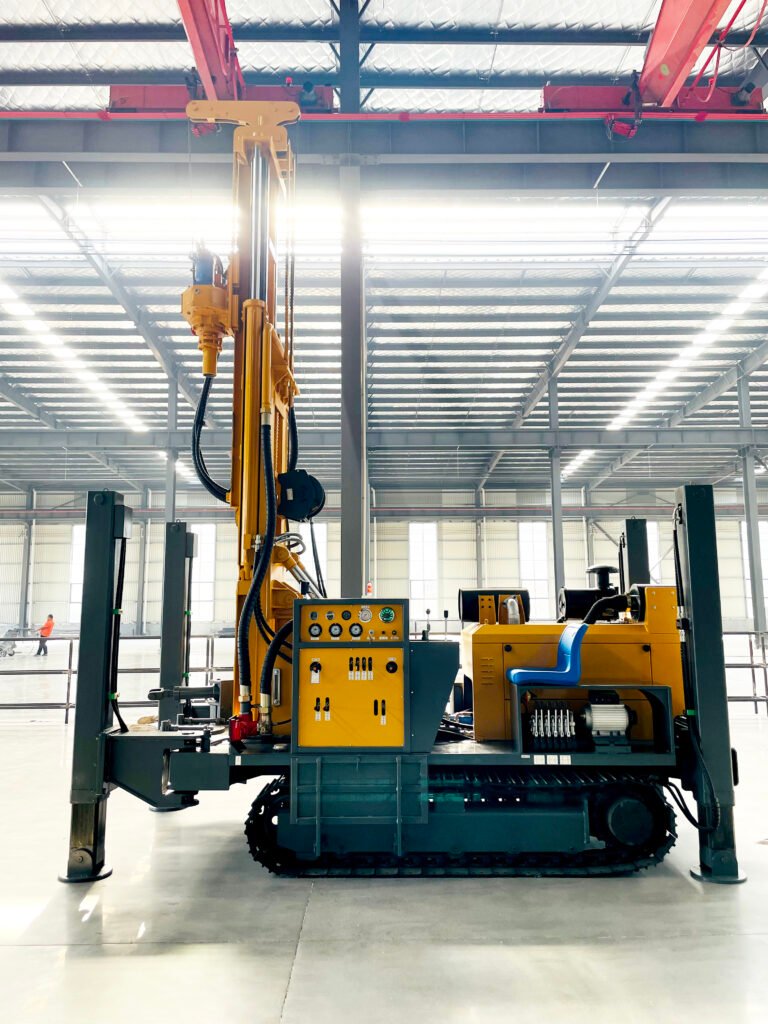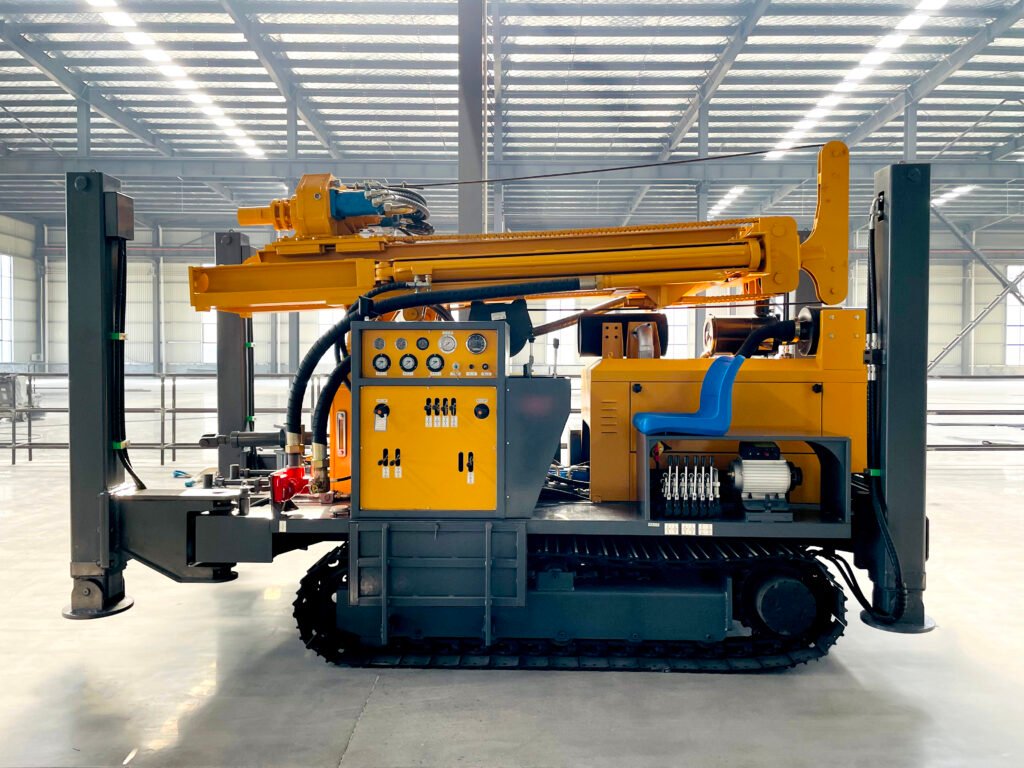By Sicher, June 18, 2025 | Published in Changsha, China
CHANGSHA, CHINA — As global demand for clean groundwater rises, hydraulic water well drilling rigs have become a cornerstone of modern well construction. But how exactly do these powerful machines work? Here’s a breakdown of their operation, from setup to completion.
The Basics: What Is a Hydraulic Drilling Rig?
A hydraulic water well drilling rig uses high-pressure fluid to power its drilling mechanism, making it faster and more efficient than traditional mechanical rigs. These rigs are commonly used for residential, agricultural, and industrial wells, capable of reaching depths of hundreds—or even thousands—of feet.

Step-by-Step: How It Works
1. Setup & Positioning
- The rig is transported to the drilling site (often truck-mounted for mobility).
- Stabilizers or outriggers are deployed to ensure a level, secure base.
2. Drilling Process
- Rotary Drilling: A hydraulic motor rotates the drill bit, while a pump circulates drilling fluid (a mix of water and bentonite clay) to:
- Lubricate and cool the bit.
- Carry crushed rock (cuttings) to the surface.
- Stabilize the borehole walls to prevent collapse.
- Hydraulic Power: The rig’s hydraulic system controls the drill’s speed, torque, and downward pressure, adjusting in real time for different soil layers (e.g., soft clay vs. hard rock).
3. Casing Installation
- Steel or PVC casing pipes are inserted into the borehole to prevent contamination and collapse.
- Grout is pumped around the casing to seal gaps between the pipe and earth.
4. Well Completion
- A screen filter is added at the bottom to allow water in while keeping sediment out.
- The rig’s pump flushes the well to remove debris before final testing.
Why Choose Hydraulic Rigs?
- Speed: Hydraulic systems drill 30–50% faster than cable-tool rigs.
- Precision: Sensors monitor drill pressure and fluid flow, reducing errors.
- Versatility: Can handle diverse terrains, from sandy soils to fractured bedrock.
Challenges & Innovations
- Maintenance: Hydraulic systems require regular fluid checks and seal replacements.
- Eco-Upgrades: Newer models use biodegradable drilling fluids and solar-powered pumps to reduce environmental impact.
Expert Insight
“Hydraulic rigs dominate the market because they balance power and control,” says Dr. Elena Martinez, a hydrogeologist at the Global Water Institute. “But proper training is critical—operators must understand fluid dynamics and geology to avoid well contamination.”
The Future
With automation and AI integration, next-gen rigs may soon self-adjust to underground conditions, making water access even more efficient in water-scarce regions.
Final Thought: As technology advances, hydraulic drilling rigs are set to play a pivotal role in solving the world’s water challenges—one well at a time.

